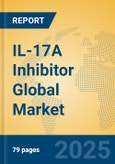Regional Market Trends
IL-17A inhibitor market evolutions differ regionally, shaped by disease epidemiology, dermatology infrastructure, and formulary preferences.- North America: Boasting a CAGR of 6.0%-9.0%, the United States spearheads via high psoriasis prevalence in Caucasian populations and step-therapy waivers for rapid initiations, with trends toward value-based bundles in California hubs.
- Europe: Growing at a CAGR of 5.5%-8.5%, Germany and France dominate through HTA assessments favoring rapid PASI improvements, emphasizing joint-skin dual outcomes in centralized registries.
- Asia-Pacific: Projected CAGR of 7.0%-10.0%, India and Japan fuel ascent amid genetic predispositions in South Asians, with national programs subsidizing fixed-dose pens for urban clinics.
- Latin America: At a CAGR of 6.5%-9.5%, Brazil and Argentina progress via PAHO-endorsed guidelines for psoriatic arthritis, targeting affordable access in underserved Amazonian communities.
- Middle East and Africa (MEA): Exhibiting a CAGR of 6.0%-9.0%, UAE leads with expatriate-driven demand and Gulf-funded biologics centers, countering African underdiagnosis through mobile screening vans.
Application Analysis
The IL-17A inhibitor market segments by application, harnessing anti-inflammatory potency across dermatologic and musculoskeletal domains with trajectories toward multifunctionality.- Psoriasis: This core application leverages IL-17A blockade for plaque clearance, achieving 90% BSA reductions in biologics-naïve patients; trends encompass head/neck involvement approvals and phototherapy adjuncts for recalcitrant palmoplantar subtypes.
- Psoriatic arthritis: Addressing enthesitis and dactylitis in 20-30% of psoriasis cases, inhibitors like secukinumab yield ACR50 responses in 60%, with evolutions toward ultrasound-guided early interventions minimizing radiographic progression.
- Ankylosing spondylitis: For HLA-B27-positive axial disease, IL-17A agents reduce BASDAI scores by 50%, trending to non-radiographic extensions and MRI endpoints validating spinal inflammation halts.
- Others: Spanning hidradenitis suppurativa and Crohn's, this arena trends to dose escalations and bispecifics targeting IL-17F for enhanced gut-skin axis control in comorbidities.
Company Profiles
- Novartis: Novartis's Cosentyx (secukinumab) led with USD 6-6.5 billion in 2024 revenues, up 23% to $6.141 billion, powering immunology growth within total 2024 net sales expansions; U.S. and European patents expire in 2029-2030, spurring biosimilar preparations.
- Eli Lilly: Eli Lilly's Taltz (ixekizumab) generated USD 3-3.5 billion in 2024 sales, with Q4 alone at $952 million up 21%, contributing to immunology totals amid patents lapsing 2028-2031; U.S. trends showed 24% revenue hikes to $665.5 million in Q4.
- UCB: UCB's BIMZELX (bimekizumab-bkzx) achieved USD 0.6-0.7 billion in 2024 revenues, bolstering €5.613 billion net sales up 17% CER, with FDA 320 mg psoriasis approvals in October 2024 enhancing moderate-to-severe positioning.
- Ortho Dermatologics: Ortho Dermatologics' SILIQ (brodalumab) sustains niche psoriasis revenues, integrated into Bausch Health's dermatology segment reporting $634 million in Q4 2024, focusing on IL-17RA blockade for recalcitrant plaques.
Industry Value Chain Analysis
The IL-17A inhibitor value chain fuses genomic insights with targeted cytokine neutralization, illustrative of dermatology-rheumatology convergence and patient empowerment. It launches with R&D, employing single-cell RNA sequencing to dissect Th17 polarization and imiquimod-induced psoriasis models for potency assays, advancing via Phase III superiority trials against TNFs using composite ACR/PASI endpoints and EMA PRIME access for expedited filings. Manufacturing utilizes PER.C6 or NS0 cells for glycosylated monoclonals, with affinity chromatography yielding >99% purity and endotoxin controls below 0.5 EU/mg, scaled via single-use bioreactors to mitigate contamination risks. Supply ecosystems feature temperature-monitored logistics for 2-8°C vials, with RFID tracking per GS1 standards to ensure 98% on-time delivery amid seasonal demand. Regulatory milestones include FDA dermatology division reviews on scalp/nail subscales and post-marketing studies via PSOLAR-like registries surveilling malignancies. Marketing harnesses virtual reality simulations of skin clearance for HCP education, disseminated through specialty distributors with rebate cards slashing copays to $5. End-delivery incorporates app-based injection trackers and multidisciplinary clinics blending telederm with physiatry, promoting adherence via nudges. Novartis exemplifies end-to-end control from secukinumab discovery to global tenders, while UCB's BIMZELX leverages partnerships for IL-17A/F dual inhibition, navigating $1.5-2.5 billion R&D investments and HTA dossiers quantifying QALY gains at 0.8-1.2 per patient-year.Opportunities and Challenges
Opportunities:
- Indication Diversification: Axial spondyloarthritis non-radiographic approvals could swell eligible pools by 25%, especially in Asia-Pacific, via MRI-integrated trials demonstrating ASDAS improvements.
- Bispecific Advancements: Dual IL-17A/F blockers like bimekizumab promise 10-15% superior joint responses, capturing premium segments in psoriatic arthritis through head-to-head data.
- Biosimilar Horizons: Post-2028 expiries enable 30-40% price drops in Europe, spurring Latin American tenders and volume surges in high-prevalence MEA cohorts.
- Digital Personalization: Wearable inflammation trackers linked to dosing apps could boost persistence to 90%, facilitating real-world evidence for payer buy-in.
Challenges:
- Patent Cliffs: 2029-2031 expiries for Cosentyx and Taltz risk 50% revenue erosion, intensifying biosimilar litigation and forcing lifecycle extensions via formulations.
- Safety Profiles: Candida incidences at 3-5% deter initiations in immunocompromised, requiring enhanced prophylaxis guidelines and pharmacovigilance to sustain trust.
- Access Inequities: Dermatology wait times averaging 4-6 months in rural North America delay therapies, exacerbating DLQI burdens in underserved Hispanic populations.
- Competitive Overlap: IL-23 rivals like guselkumab siphon 20% market share in psoriasis, demanding differentiated combo studies to reclaim frontline status.
This product will be delivered within 1-3 business days.
Table of Contents
Companies Mentioned
- Novartis
- Eli Lilly
- UCB
- Ortho Dermatologics








